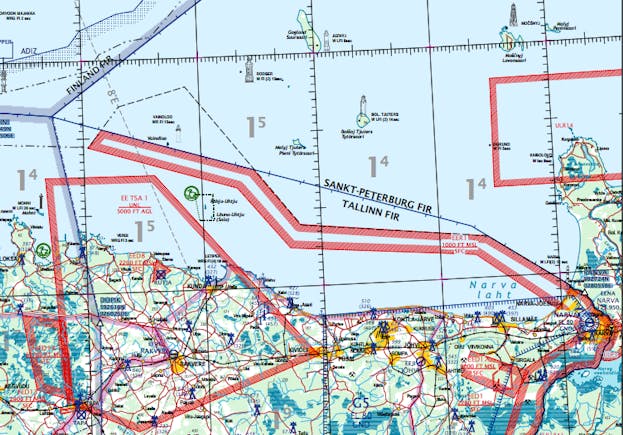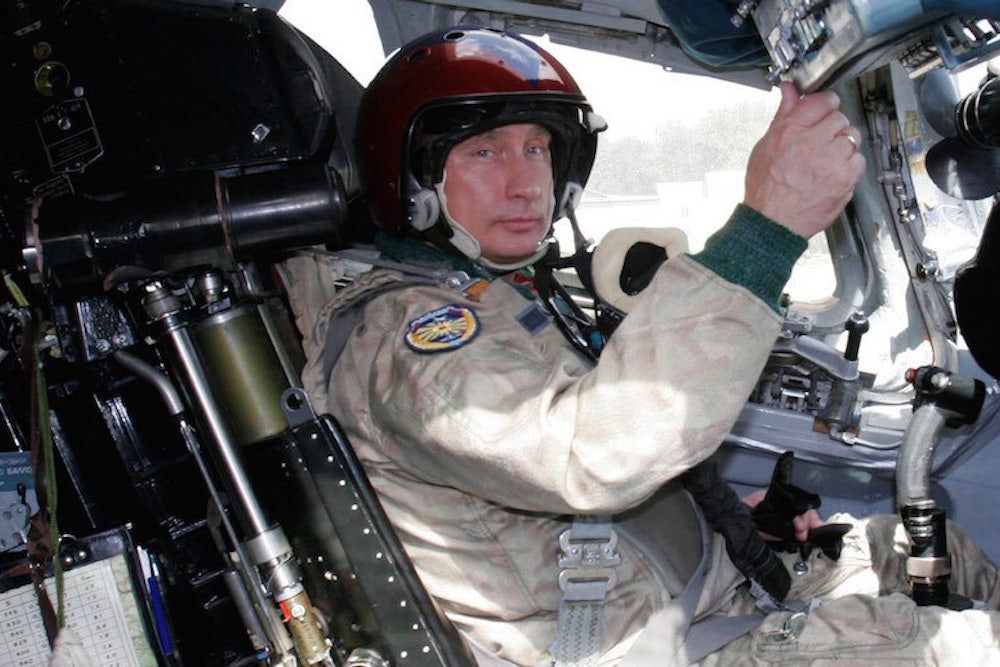Almost six months after pro-Russian rebels shot down Malaysia Airlines Flight 17 over Eastern Ukraine, killing all 298 people aboard, Russia is flouting international aviation rules and showing reckless disregard for the safety of civilian flights. Over the past several months, NATO’s Baltic Air Policing mission has detected an alarming number of Russian military planes flying through international airspace with their transponders turned off, rendering them invisible to most civilian air traffic controllers. In the second week of December alone, NATO intercepted no less than ten Russian military planes, including some Su-34 Fullback bombers, flying under the radar. On December 14, a Russian military jet flying with its transponder shut off nearly collided with a Scandinavian Airlines commercial flight.
When the Russian Air Force planes turn off their transponders, “they are virtually invisible to civilian air traffic controllers,” says Estonian Colonel Jaak Tarien, commander of the Estonian Air Force. “Because of cost cuts, civilians are using only secondary radars, which means that they don’t see air traffic that doesn’t want to show itself.” Estonia and Finland share military radar data, which can detect those kinds of flights, with civilian air traffic controllers.
NATO tripled its Baltic Air Policing mission, based out of Estonia, Lithuania, and Poland, in May, a move that coincided with an increase in Russian military activity around NATO airspace.

“In 2014 there were three times more intercepts than in 2013,” says Tarien. On December 8, Dutch Air Force planes posted to the Baltic Air Policing Mission intercepted two Russian bombers on their way to Kaliningrad, The Aviationist reports.
Not only are these planes flying under the radar, but they’re also following unpredictable flight patterns, and in some cases illegally entering NATO territory. “They use interesting altitudes, which are not just for regular transit flights—they move up and down, they do tactical maneuvers in international airspace, which is not safe behavior,” says Tarien, who commands the Estonian Air Force from Amari Air Base, where part of the Baltic Air Policing mission is hosted.
Russian military planes crossed into Estonian territory eight times in 2014, compared to just once in 2013. There was a noticeable increase in the frequency of incursions right after additional NATO aircrafts arrived in the region this spring, says Estonian Captain Lauri Kuusekänd. All of them occurred in a small triangle of airspace surrounding the Estonian island of Vaindloo, pictured below:

The incursions last no longer than a minute as the flights cut across the tip of the Vaindloo triangle en route to air bases in Kaliningrad, but they're enough to send a clear message that the Russian Air Force respects neither NATO borders nor air traffic safety measures. "It’s part of a bigger attitude toward NATO and neighbors. They’re constantly probing reaction, behaving aggressively, seeking counter reactions. It’s kind of going back to cold war era tactics," says Tarien.
The Russian Ministry of Foreign Affairs has responded to these reports with the same variety of misinformation that skewed the public's understanding of what happened to Flight MH17. On December 25, for example, a Russian Antonov-72 aircraft was detected in Estonian territory. "The aircraft reported that due to inbound traffic it was forced to change its course and enter into Estonian airspace by 1.2 miles," says Kuusekänd. "But we know what happens in that airspace, so we have solid proof, that not even in the close vicinity were there any aircrafts. So that was unbelievable explanation for this incursion." Russian air traffic controllers conceded that the violation had in fact occurred, but the Russian Ministry of Foreign Affairs denied it. After the near-collision of the SAS flight with a Russian aircraft, Russian Ambassador to Denmark Mikhail Vanin denied there was any danger to passenger flights, and suggested that the Swedish authorities who reported the incident were high on pot.
